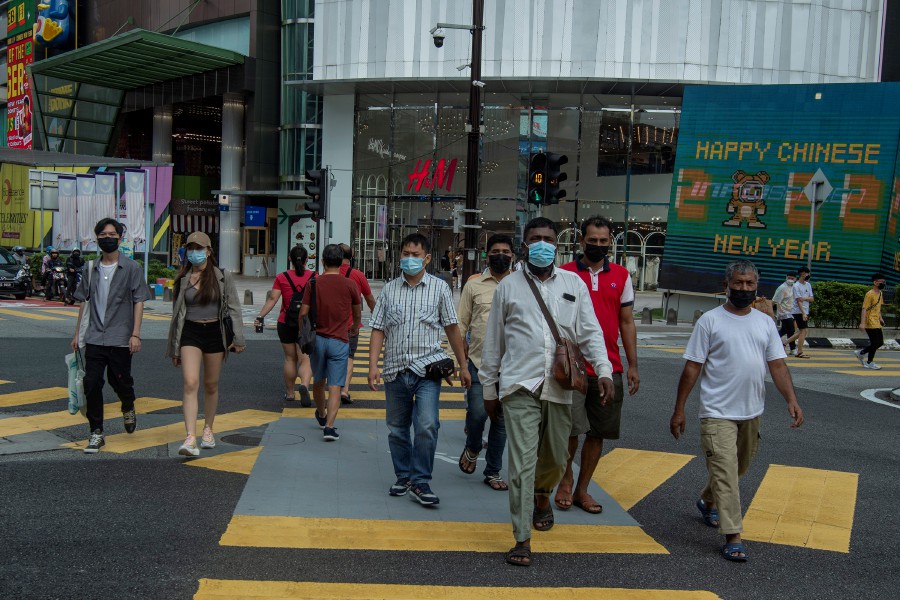In Malaysia, the Omicron variant of Covid-19 appears to be causing less severe illness, with the vast majority of cases reportedly in Categories 1 and 2, and only 0.5 per cent in Category 3 and above.
But, due to the Omicron variant's high transmissibility rate, it is vital to minimise the rate of transmission.
For example, 0.5 per cent of Category 3 and above cases out of 20,000 daily cases means 100 people that may need to be hospitalised, be placed in Intensive Care Units (ICUs), and/or require ventilation daily.
According to the CovidNow portal, hospitalisation rates have been increasing since the end of January this year, coinciding with the rise in cases in early and mid-January.
As of Feb 8, the hospital utilisation rate was at 70 per cent (nationwide), with 52.1 per cent of ICU beds occupied and and 33.1 per cent of ventilators used.
We have experienced in previous waves the impact of rising cases on the public healthcare system. So, the authorities must plan accordingly.
Health director-general Tan Sri Dr Noor Hisham Abdullah said we may see 22,000 daily cases by the end of March should the infectivity rate remain at 1.2.
Omicron's threat is not so much in its disease severity, but in the speed with which it spreads.
That is why the health minister had recommended working from home, and industries (such as manufacturing and construction) need to ensure a high frequency of testing and adherence to safety and health protocols.
These are the best options to balance public health and the economy, and must be the way forward.
While the Health Ministry has mandated five days of isolation after exposure to the virus, there are anecdotal reports of home test kits showing negative results throughout the isolation period among boosted individuals, and only returning positive results on day 7 onwards.
False negatives and premature release of virus carriers into the community defeat the purpose of isolation.
Therefore, multiple self-tests throughout isolation are ideal.
One must be aware of the expiration date, though. As a rule of thumb, assume that any results from an expired kit are false.
We have to minimise transmission to help our public health system manage the situation, and handle the risks to vulnerable groups as the virus is reaching further and wider into the community and more rapidly.
As suggested by experts, the MySJ Trace feature in the MySejahtera app should be tied to an early warning and prevention system so that people can avoid high-risk places.
In other words, it should be a wider proximity alert, instead of alerting historical close contacts.
Perhaps this can be done as a revival of the Hotspots Identification for Dynamic Engagement system, where real-time hotspot locations are updated so that people don't need to be in a certain proximity to avoid the area.
Virus mutations aren't new and our immune system is equipped to deal with mutations, provided it is given a sufficient amount of information to deal with potential variability in the future.
It is also good to know that the government is procuring Covid-19 treatments to address disease progression and possibly shorten recovery time, crucial factors in alleviating the burden on the public healthcare system.
We are still in the early stages of the impending Omicron wave.
As cases peak, what if the virus spread results in a higher percentage of high-risk groups and doubles the percentage of moderate to severe cases from 0.5 per cent to 1 or 2 per cent?
One can imagine how this rise in severe cases can be exponential.
According to the Hilgi Library portal, Malaysia has been ranked 13th out of 155 countries on sugar consumption per capita based on 2018 data.
Various studies link blood sugar levels to weakened immune response, with sugar spikes and calorific surplus linked to obesity, that might lead to higher risk of severe Covid-19, even among younger age groups.
Most underlying diseases that tend to contribute more severe Covid-19 symptoms are non-communicable diseases (cardiovascular diseases, diabetes, cancer, etc.) which can be attributed to lifestyle.
This means we can do something to stop transmission at the individual level.
To summarise, the five key steps to navigating the surge of Omicron cases are public healthcare capacity and readiness, minimisation of transmission, proper self-management, new technologies and personal interventions.
The writer is head of science and technology at think tank EMIR Research
The views expressed in this article are the author's own and do not necessarily reflect those of the New Straits Times





